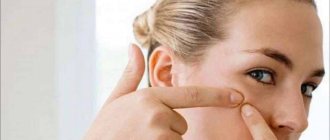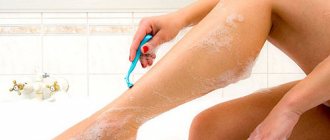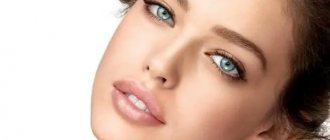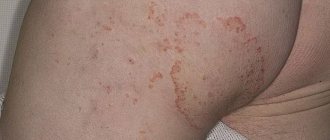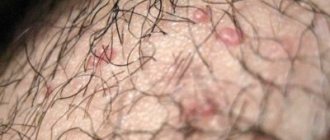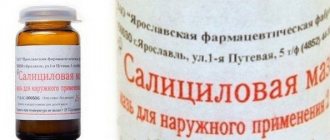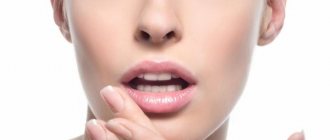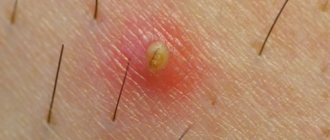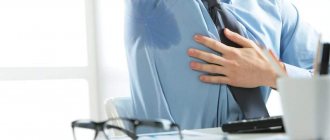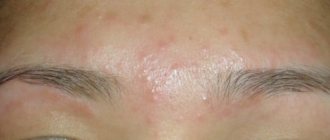Psychosomatics is a medical movement that studies the impact of emotional imbalance on the formation of physical diseases or pathologies. Acne on the face is considered one of these problems. Psychosomatics explains the connection between painful rashes at different stages of life and mental disorders in the body. It's worth learning more about this. Why does a rash appear in an adult woman? The psychosomatics of acne on the face and neck is described below.
What is acne?
Pimples on the skin are a reflection of difficulties from within, not only at the physiological level, but also at the level of thoughts and understanding of the picture of the world in general.
Most teenagers believe that clear skin means open doors to a society of attractive and successful people. Pimples in schoolchildren disrupt the child’s communication skills. What causes acne? What is the psychosomatics of their appearance? By focusing on this problem, you can actually solve it without purchasing a lot of cosmetics. Do you want to know how a person evaluates himself? Ask the person to talk about how they feel about their own skin. Any described problematic situation will decipher what exactly a person does not like about himself, what he is embarrassed about, what he is dissatisfied with. Talking about a pimple indicates that something is being given too much attention.
When does the disruption begin?
In childhood itself, when the psyche is subtle and receptive, relationships with parents can build incorrect psycho-structures in the baby’s brain :
- Lack of psycho-emotional interaction with the mother (the mother, afraid of overly pampering, does not pick up the crying child; the mother imposes her affection too much; communication with the mother is dry, love and warmth are not felt).
- Ignoring the framework of the child’s world (implanting one’s own principles and desires; inattention to the needs and feelings of the child himself; prohibitions on freedom of action, manifestation of personal preferences).
It is not surprising that this child cannot avoid skin problems in life .
In such families, the “whims” of the child are usually suppressed as a threat to the authority of the mother or father. The baby can only obey.
From the early days of life, the baby has only two options : to obey - to go into a weak-willed depression, because he is not allowed to have emotional release, which in the future are ready-made psychosomatic causes of acne, or to rebel revolutionaryly.
Acne on the skin occurs for various reasons , ranging from intoxication, as a result of thoughtless nutrition, to hormonal shifts. But sometimes the cause must be sought in psychosomatics.
Mechanism of occurrence
Stressful conditions or blues provoke the production of the hormone adrenaline. It rapidly constricts some of the blood vessels, which negatively affects the condition of the skin. Another hormone that negatively affects the skin is a hormone that inhibits collagen biosynthesis and the skin restoration process.
Stress negatively affects digestion. The body is not able to fully convert food and take nutrients from it. As a result, toxins accumulate in the intestinal tract, negatively affecting the structure of the skin.
A huge number of bacteria live on the skin, including those that belong to pathogenic microflora. When immunity decreases, they begin to multiply rapidly, which becomes a factor in the occurrence of acne and other dermatological diseases.
Stressful situations also activate the sebaceous glands in the body. With a huge amount of sebum, the pores become clogged and comfortable conditions arise for the formation of pathogenic bacteria (viruses, microbes, fungi).
Causes
According to the teachings of Louise Hay about the psychosomatics of acne on the face, the main circumstances of its occurrence include:
- Violation of psychological contact with mother. If in childhood the baby does not receive enough love and affection from his parents, then this can become a factor in the appearance of acne in adolescence.
- Ignoring the baby's emotions. In this case, the cause of skin problems will be the authoritarianism of the father or mother, the imposition of one’s own thoughts and principles, prohibitions on the interests and preferences of the child.
- Excessive concern. It has the same effect as absolute neglect.
- Rejection of one's appearance. It often occurs in adolescence, if children have a painful dependence on the opinions of people around them.
- Internal disagreements. The appearance of a rash can indicate difficulties in communication or in establishing contact. For schoolchildren, this may mean fear of communicating with the opposite sex.
- Conditional benefit. In certain cases, a person wants to attract attention to himself, but does not understand how to do this. In this case, the disease takes on this function.
- An attempt to inherit the manners, appearance and behavior of an idol. In this case, a person selects a standard for himself and diligently copies it, over time moving away from his own individuality.
- Intolerance. In the course of solving certain difficulties, a person should renounce personal principles.
- Problems at work. Acne often occurs in adults when, for example, they change jobs and try to join a new team. Emotional tension affects the condition of the skin. Acne may also be caused by poor relationships with management or difficult working conditions.
- Conflicts in the family. In this case, acne occurs more in women. Misunderstandings and emotional restraint on the part of the spouse, constant brawls and tense relationships with other family members have every chance of triggering the appearance of pimples.
- Problems with money. In this case, acne occurs more often among representatives of the stronger sex, since they endure their insolvency much more seriously.
- Self-punishment. And Liz Burbo calls this reason for the psychosomatics of acne on the face one of the main ones. After committing a dishonest act, a person feels guilty and unconsciously begins to castigate himself.
Causes of acne on a woman's back - treatment, psychosomatics
Any inflammatory formations may indicate more serious disturbances in the functioning of the body. Why do rashes appear and what does it mean?
What it is
Acne is an inflammatory change in the epidermis associated with disruption of the sebaceous glands. Acne is called acne. Red, inflamed acne is often caused by bacteria.
Acne on your back can ruin your appearance and make it difficult to wear the clothes you want. They can also cause itching and pain when touched or in contact with clothing.
Signs
Signs of acne are immediately visible. Usually these are numerous formations that can have different appearances.
Main types of acne:
- White. They are formed due to blockage of the sebaceous ducts. They look like white dots. Popularly called “millet”. They may be painless to the touch and not cause discomfort.
- Black. They also appear due to the closure of the pores. Black color is acquired by oxidation. They also don’t hurt or itch.
- Reds. Inflamed acne. They appear when an infection gets inside the pore. They usually hurt and may itch.
- Subcutaneous. As the name suggests, they are located deep under the skin. They look like red lumps. They cannot be squeezed out. Very painful when touched.
- Purulent. The most severe rashes. They talk about serious disorders in the body. If squeezed, they can cause blood poisoning. They hurt a lot. The pores may release green pus and an unpleasant odor.
Causes of acne on the back in women
Acne on the back most often appears in men, because their sebum production is much higher than that of women. However, this problem can also occur in women because the epithelium on the back is usually fattier than in other areas.
The causes of acne are the same for all types of acne:
- hormonal imbalance;
- diseases of the digestive system;
- damage to the sebaceous glands;
- poor nutrition;
- smoking, drinking alcohol, as well as bad habits;
- harmful work;
- improper skin care;
- dirty air or water;
- allergic reaction;
- low-quality clothing made from synthetic fibers;
- stress.
Diagnostics
As you can see, the reasons can be both internal violations and external influences. To determine the exact cause, you must consult a doctor. Based on the type of rash, a dermatologist can determine what exactly caused it.
Treatment method
Depending on the number of rashes, three forms of severity are divided.
For mild cases, external gels and ointments may be sufficient. In moderate and severe forms, oral medication is required.
About squeezing out blackheads. Details here.
Antibacterial drugs
Antibiotic treatment is prescribed when internal problems are not detected, and acne appears due to pathogenic microbes that have entered the epithelium.
There is a wide variety of antibiotics. There are broad-spectrum drugs, and there are those that act on specific bacterial pathogens.
Therefore, the selection of tablets should be done by a doctor. Before this, he will do tests in order to find out which microbes affect the body.
Antibacterial drugs exist in the form of tablets, for oral administration, or in the form of ointments for external use.
Do not think that ointments are safer and that you can prescribe them to yourself. Despite the fact that they are used externally, the active substances can be absorbed and enter the bloodstream.
READ ALSO: Forum - The female body and Prostamol Uno - Alopecia in women
When taking it, you need to remember that antibiotics can negatively affect the beneficial intestinal microflora and take supportive medications.
Topicals
Pharmaceutical companies offer a large number of topical acne medications. The most commonly used antibiotic ointments contain zinc and vitamin A retinoids.
Antibiotic cream:
- levomekol;
- erythromycin ointment;
- tetracycline;
- syntomycin;
- benzamicin;
- zenerite
Ointments are arranged as the effectiveness and severity of the drug increases. The latter is not the heaviest, but one of the most effective. Used to treat adolescents.
Zinc ointment is a more natural preparation that contains fewer contraindications and side effects. It dries well, thereby removing excess formation of subcutaneous fat. Kills germs.
Retinoids are drugs containing subtypes of vitamin A. Some consider them the safest and most effective treatment, while others call them extremely dangerous. The annotations for the drugs indicate that it should be used only if other methods have not helped.
It is especially worth considering the use of women. The instructions indicate that the attending physician must make sure that the woman is not pregnant and that she is using at least 2 methods to prevent pregnancy.
A large dose of vitamin A thins the skin, renews the epithelium and allows subcutaneous sebum to come out without clogging the pores - this is the principle of action of these ointments.
READ ALSO: Why pimples appear on the genitals
Folk remedies:
- Sea salt baths can draw out formations from pores. Pour a teaspoon of sea salt into a glass of water and dissolve completely. Wash problem areas with this solution.
- Calendula tincture kills bacteria and germs and promotes healing. Apply directly to acne twice a day.
- A clay mask diluted with water wonderfully dries and cleanses. The result will be visible literally from the first use. Apply the prepared solution for 30 minutes and rinse with warm water.
- Taking baths with the addition of a decoction of herbs such as chamomile, St. John's wort, and celandine is beneficial. You can also add 15 drops of orange, grapefruit, lemon or tea tree essential oils to the water. This will soothe and disinfect the skin.
Diet therapy
Diet is very important in treatment. If you eat improperly, the liver and kidneys cannot cope with large amounts of fat and harmful substances, and this can affect your appearance.
Proper nutrition for acne:
- try to give up fried, fatty and fast food;
- reduce coffee consumption to a minimum (if you do not have problems with blood pressure);
- avoid chips, crackers, processed foods and anything containing preservatives and dyes;
- replace fatty meat with dietary meat (chicken, turkey, rabbit), and eat only non-fatty fish (cod, haddock, silver hake, pollock, river perch, pike perch, bream, pike, roach, mullet, flounder, all types of shellfish and families cancerous);
- eat as many fruits and vegetables as possible, preferably fresh;
- drink as much water as possible, even if you don’t feel like it.
Source: https://clever-lady.ru/beauty/ugri-na-spine-u-zhenschiny-prichiny-lechenie-psihosomatika.html
What psychosomatics says
Psychosomatics is a direction in medicine that studies the direct connection between a person’s emotional state and physical state. It's no secret that most diseases appear after stress. Acne is no exception.
How to explain this scientifically: stress can trigger the production of adrenaline. This hormone constricts blood vessels, thereby reducing the flow of nutrients to the epidermis.
In case of emotional disturbances, the digestive organs are the first to suffer. Because of this failure, the body does not receive enough nutrients and cannot completely process food, forming toxins.
Psychological reasons:
- childhood problems (parental neglect or excessive care);
- dissatisfaction with one's appearance;
- problems at work;
- tension in the relationship with your life partner.
Some people believe that acne on the back may indicate that a person is carrying a heavy burden and cannot get rid of it.
If acne appears due to an emotional state, consultation with a psychologist is necessary.
Skin care when sick:
- Cleanliness is the key to health. In summer and when you sweat profusely, you should shower twice a day. In this case, you can use both regular and tar.
- Do not rub the skin in problem areas with scrubs and hard washcloths, as this will only injure the skin and create deep wounds.
- To open the pores, you can steam the skin or visit a sauna or bathhouse.
- Popping pimples is a bad idea. If squeezed incorrectly, you can only aggravate the inflammation and even cause blood poisoning.
- If a large pimple bothers you, apply a compress with Vishnevsky ointment on it at night. By morning the pus will come out on its own.
- Try to avoid clothing made from synthetic materials, especially during the hot season.
- Change bed linen and towels frequently.
- Try to devote the necessary time to sleep and rest.
- Do physical exercise and walk more in the fresh air.
How to treat acne on the face in women? The answer is in the article.
About the treatment of globular acne with folk remedies. Read on.
Source: https://myplast24.ru/ugri-na-spine-u-zhenshhiny-prichiny/
Psychosomatics of acne
Mental disorders and mental imbalance in the body are the factors that contribute to the occurrence of problem areas on the skin.
Louise Hay about the psychosomatics of acne on the face says that often the cause is a violation of plans made in advance. A person has composed an impeccable sequence of his own actions, but due to small obstacles or absurd actions, everything collapses. Outbursts of discontent and anger arise inside, having the image of a depressive reaction.
By tracking the chronology of incidents, especially if the rashes have a clear cyclicity, it is possible to establish what events coincide with the moment the pimples appeared. Prolonged inflammatory processes affecting deep dermatological structures, the presence of subcutaneous painful elements can result in low self-esteem.
Signs
Signs of acne are immediately visible. Usually these are numerous formations that can have different appearances.
Main types of acne:
- White. They are formed due to blockage of the sebaceous ducts. They look like white dots. Popularly called “millet”. They may be painless to the touch and not cause discomfort.
- Black. They also appear due to the closure of the pores. Black color is acquired by oxidation. They also don’t hurt or itch.
- Reds. Inflamed acne. They appear when an infection gets inside the pore. They usually hurt and may itch.
- Subcutaneous. As the name suggests, they are located deep under the skin. They look like red lumps. They cannot be squeezed out. Very painful when touched.
- Purulent. The most severe rashes. They talk about serious disorders in the body. If squeezed, they can cause blood poisoning. They hurt a lot. The pores may release green pus and an unpleasant odor.
READ ALSO: Acne on the body - on the legs, arms, stomach, chest and back
The meaning of acne
Pimples do not appear randomly throughout the body. Each area of pimple occurrence has a specific meaning, as do the following factors:
- If acne is permanent and does not disappear with prolonged treatment, this indicates low self-esteem. In the soul of a person, internal disagreement is brewing due to the fact of self-rejection.
- Pimples that appear only occasionally indicate that the individual from time to time wants to close himself off from the society around him, to retire from the world. The stronger this desire, the more acne appears on the skin.
- When the number of pimples unexpectedly increases, this is an immediate sign that serious stress has occurred in a person’s life, which has activated psychosomatic processes again.
- As for gender, pimples appear on the face of girls, and on the back of the stronger sex. For what reason does this happen according to the teachings of psychosomatics:
- Women experience emotional difficulties. Often accompanying processes are tears and conversations with friends and family, for this reason acne exanthema has an open appearance.
- Men tend to keep all anxieties and feelings inside themselves, which is why inflammation has a hidden appearance.
The place of its occurrence can tell more about the factors responsible for the appearance of psychosomatic acne.
Acne from psychosomatics: causes
To begin with, we will explain what it is, a psychosomatic disease. This is necessary because some people mean one thing by it, but in reality the term means something completely different. Clarification will help us avoid mistakes and misunderstandings. Psychosomatics is a whole direction in medicine that studies the influence of psychological problems on the real state of human health. Experts in this field pay special attention to the psychological characteristics of specific people in order to study ailments that arise in them for psychosomatic reasons.
But diseases of this type are diseases the cause of which lies not in infections, bacteria or disturbances in the functioning of organs, but in the mental state of a person. This does not mean that in fact there is no disease - it is simply caused by our brain, and not by external influences.
Psychosomatic diseases are diseases the causes of which are more the mental processes of the patient than any direct physiological causes. If medical examination cannot detect a physical or organic cause of the disease, or if the disease is the result of emotional states such as anger, anxiety, depression, guilt, then the disease may be classified as psychosomatic.
Source
On this basis, both truly serious diseases and dysfunctions and milder disorders can manifest themselves: for example, acne. In such cases, the root of the problem is not that you are not properly caring for your skin or that there is something wrong with your body. Here the reason lies in the fact that the person is overthinking himself or is afraid of something. In this case, most often there are complexes about appearance. This especially applies to women. Ladies often overindulge themselves and worry too much about looking good, often forgetting about their health - both physical and mental.
There are only a few reasons for the formation of any psychosomatic disease, including acne. For example, the famous psychologist Leslie LeCrone identifies 7 main factors:
- conflict. In this case, what is meant is not a conflict between one person and another, but rather internal disagreements with oneself. This situation arises when a person, for example, has desires that contradict his principles, morals, or concepts of “good” and “right.” This rarely means that the person wants to do something illegal. This refers to taboos that we invent for ourselves or that are formed in the process of strict education;
- body signals. This concept means a state in which our well-being could be completely reflected by any of the figurative expressions, like: “This is a complete headache.” A striking example of this would be the actual occurrence of constant migraines when interacting with an object to which the above expression applies;
- conditional benefit. This defines a situation in which a person begins to suffer from a disease that at the moment can bring him some benefit. The most striking example is when a student suddenly falls ill with the flu right before a test he doesn’t want to take. And no, he is not pretending - the symptoms are real, only their cause is not an infection, but a psychosomatic one;
- past experience. This refers to diseases that arise as a result of any psychological trauma or negative emotional episode from the past. For example, childhood trauma;
- identification. This is the name for a situation in which a person strongly identifies with another person who suffers from a certain illness. In this case, the patient exhibits symptoms of the illness of the person with whom he identifies;
- self-suggestion or external suggestion. When a person convinces himself of the presence of a certain disease, and later actually discovers its symptoms. A similar situation can be observed when the presence of the disease is suggested to the patient by someone else, for example, doctors or hypochondriac parents;
- self-punishment. It arises as a result of a feeling of real guilt that a person experiences. He begins to reproach himself for what he has done and convince himself that he deserves punishment for it. And the punishment actually occurs - the symptoms of a certain disease begin. In this case, the disease will also be psychosomatic.
And this does not mean that you need to immediately go to a psychiatrist. Indeed, if psychosomatic diseases are serious (for example, often people even lose the ability to walk due to nervousness), then contacting a specialist is necessary. However, in the case of ordinary acne, this is much easier to solve.
Acne on the face
Infrequent or small pimples on the face may appear in those who have a negative attitude towards changing personal plans. Large and intense acne indicates rejection of oneself and the surrounding society. The individual is simply unable and unwilling to come to terms with his own actions and their results.
The part of the face where the rash occurs is also important. According to psychosomatics, the causes of acne on the face are as follows:
- On the forehead - a person is afraid of looking funny and stupid and demands the greatest seriousness and responsibility from himself.
- On the chin - continuous conflict situations with loved ones have a great impact on a person’s mood.
- In the nose - the degree of anxiety reaches its peak.
- On the bridge of the nose, pimples appear due to the constant blocking of feelings and the accumulation of powerful anger from within.
- Under the eyes - a prerequisite for stress, perhaps, is great fatigue.
- On the cheeks - a person feels abandoned and believes that no one needs him.
- On the lips - the individual is fixated on himself and stuck on experiences.
Acne on the face is a fairly common picture. In order to get rid of them, psychosomatics recommends adjusting your attitude towards yourself and the people around you.
Acne on the back
If the area of the rash is the back, the person is burdened with a difficult burden and is unable to cope with it due to moral pressure. By expressing himself more easily, he has taken on too much responsibility, which overwhelms him.
If acne appears on the lower back, its carrier is a very receptive and vulnerable soul, which is characterized by a feeling of insecurity, as well as problems with communication.
Psychosomatic assistance in therapy
First, the need for the assistance of somatologists as a comprehensive treatment for acne is considered. You may need to seek help from a neurologist, a psychologist, or a psychotherapist.
It should be borne in mind that psychosomatic support is not about healing the body, but about adjusting the internal state of the body and eliminating emotional difficulties. With prolonged exposure to tension, the immune system weakens, losing the ability to fight pathological representatives. A person is exposed not only to inflammatory processes and dermatological problems, but also to viral infections and colds.
Psychosomatics is rapidly using appropriate methods of psychotherapeutic influence:
- hypnosis;
- cognitive therapy;
- restoration and adjustment of individual settings;
- holotropic breathing;
- gelstatt treatment.
Gelstatt therapy
A method of psychotherapy that can help the patient find out what is happening to him at the moment. This definition is considered the basis of assistance. Gelstatt therapists teach that every person has his own past, which often leaves negative traces, and in addition, a future about which most people dream and fantasize. This method helps with psychosomatic acne on the face and chin. But not a single person thinks about the current time of existence, leaving to chance what is capable of delivering pleasure and delight.
Antibacterial drugs
Antibiotic treatment is prescribed when internal problems are not detected, and acne appears due to pathogenic microbes that have entered the epithelium.
There is a wide variety of antibiotics. There are broad-spectrum drugs, and there are those that act on specific bacterial pathogens.
Therefore, the selection of tablets should be done by a doctor. Before this, he will do tests in order to find out which microbes affect the body.
Antibacterial drugs exist in the form of tablets, for oral administration, or in the form of ointments for external use.
Do not think that ointments are safer and that you can prescribe them to yourself. Despite the fact that they are used externally, the active substances can be absorbed and enter the bloodstream.
READ ALSO: Pimples on the pubis: why they occur and how to treat them
When taking it, you need to remember that antibiotics can negatively affect the beneficial intestinal microflora and take supportive medications.
Holotropic Breathwork
A method of therapy for psychosomatic acne on the face and shoulders, which involves rapid breathing (hyperventilation). Carbon dioxide leaves the patient's blood, causing compression of the blood vessels, as well as the brain. Inhibitory movements are activated in the cortex, which puts a person in a peculiar mood, accompanied by euphoria and hallucinations.
Experts in the field of psychosomatics, who are considered adherents of the method, believe that in this state a person is able to release his own internal problems and anxieties that were previously repressed into the subconscious.
How to deal with acne with psychosomatics
Treating only external manifestations will not bring the expected result. The situation may improve. But until the true cause is eliminated, acne will not disappear.
In such situations, solving the problem must be approached comprehensively. Psychological help is also needed.
The most common treatment methods:
- Gestalt therapy. This is a set of special techniques that allow a person to realize what is happening to him at the present moment. The technique involves the use of various techniques. It is important that contact and dialogue be established between the patient and the Gestalt therapist. During therapy, the patient is helped to identify those parts of his own personality that he rejects. This is the first step towards accepting these traits in yourself and restoring the integrity of your personality.
- Hypnosis. The state into which the patient is plunged allows the body to relax. Breathing, heartbeat and the functioning of internal organs are normalized, which was disturbed by stress. In the process of work, hidden or forgotten fears that caused the problem are revealed.
- Cognitive therapy. The process is aimed at working with cognitive functions: language, attention, visual spatial perception. Trainings allow you to better perceive yourself as a person and have a beneficial effect on self-esteem. In stressful or other unpleasant situations, cognitive function may be impaired. Their restoration, as it were, triggers the reverse mechanism.
- Holotropic breathing. This is a special breathing technique in which the patient must breathe frequently and quickly. As a result of prolonged hyperventilation, the level of carbon dioxide decreases and blood vessels narrow. Oxygen starvation begins. This leads to inhibition of the cerebral cortex and more active work of the subcortex. In this way, all experiences that have been repressed from consciousness are released.
